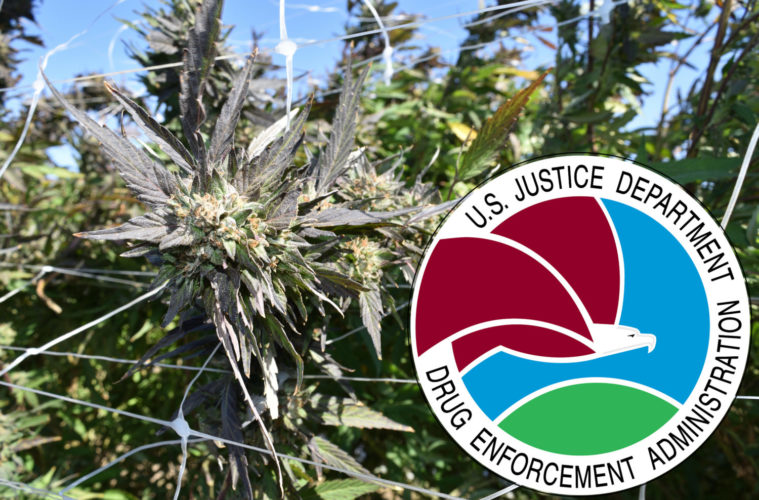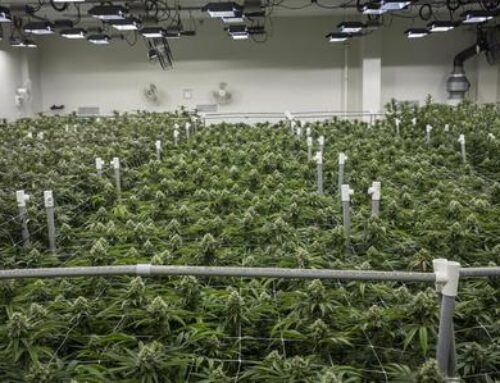DEA FINALLY ANNOUNCE RULES TO EXPAND SUPPLY OF RESEARCH WEED
April 8, 2020
Fours years after originally saying the supply of research-grade marijuana in the United States would be expanded, the Drug Enforcement Administration is finally releasing the draft rules for the first round of public comment.
The key phrase here is “the first round.” The saga essentially started 13 years ago with the DEA originally receiving a recommendation to expand the research-grade marijuana supply in the U.S. from its own administrative law judge, Mary Ellen Bittner. Bittner believed the case of UMass Professor Lyle Kraker wanting to grow marijuana for the Boston medical community was valid. In her decision, Bittner called the supply of marijuana for research inadequate and said Craker’s registration to grow marijuana would be in the public interest.
Nine years after Bittner’s recommendation, the DEA announced they would open up the process to license new manufacturers in 2016.
The DEA started looking at the wider picture of what they would have to in regards to internal and external policy to accommodate more pot growers while attempting to stay in line with the United Nations treaties they pushed in the first place. Last August, the DEA updated where things were currently after many delays in the years prior.
“DEA is making progress in the program to register additional marijuana growers for federally authorized research, and will work with other relevant federal agencies to expedite the necessary next steps,” said DEA acting administrator Uttam Dhillon at the time. “We support additional research into marijuana and its components, and we believe registering more growers will result in researchers having access to a wider variety for study.”
On the lighter side of things, they also announced at the time you didn’t need permission to grow hemp anymore.
Last week we got out first look at what this expansion will look like. It includes growers selling their whole crop straight to the DEA no later than four months after the harvest. That leaves plenty of time for all the production processes expected to take place after farming. While the ruled sounds a bit overbearing, the DEA will essentially serve as a distributor. But some are concerned the DEA is not set up to be a pot distributor and the quality of the medicine will degrade in transport just like when clueless people got into the distribution game in California’s legal market.
The Multidisciplinary Association for Psychedelic Studies backed Craker’s effort in the mid-2000s that led to the Bitner recommendation to expand the program. MAPS founder Rick Doblin told L.A. Weekly the DEA’s announcement is a good sign for the future, “but it’s more unnecessary delays since DEA could and should issue licenses now.”
NORML deputy director Paul Armentano has also been following the saga of expanding the pool of people growing research-grade marijuana in the U.S. since it’s earliest days.
“These rules are unduly onerous, expensive and impractical; they are unlikely, even if implemented, to greatly facilitate clinical cannabis research in the United States,” Armentano said of the proposed rules. “Further, the DEA has an incredibly poor track record in this arena — having for years now promised to expedite and streamline this process, but failing to deliver. Fool me once, shame on you; fool me twice, shame on me.”
California-based Biopharmaceutical Research Company is one of the companies that had been waiting on the DEA to make a move for years. The company was founded former Navy SEAL George Hodgin after he got exposed to the lack of research around medical cannabis while he was in grad school at Stanford. While in school he was helping a fellow vet with their medical care. The fellow Navy vet was sick of the opioid regime he was on and wanted to give cannabis a shot.
They started asking the doctors if there was any guidance they could provide when it came to things like strains, dosing and symptom-specific issues. “All the doctors said they were great questions and you’re probably going to be fine, but the fact is we don’t really know how to dose things. We don’t know how to dose things exactly because we don’t have a way to research it,” Hodgin told L.A. Weekly.
The doctors told Hodgin even if they were to jump through the hoops. The pot coming out of the National Institute on Drug Abuse farm at the University of Mississippi was garbage in general, nevermind being a tool to grade the medical value of cannabis in a clinical setting.
The first guidance that came out from the DEA on the new program was August 12, 2016, “about a month after I really started to dig into it and formed my company to do this, to grow for research purposes,” Hodgin said, “So we’ve been at it three and a half years waiting for something like this.”
BRC ended up being among the first applicant pool that filed in early 2017 for approval and is still waiting to this day.
“We’ve already been sort of considered as refiled. When they released this new guidance they did two things. First, they said here are the rules more or less on how we will evaluate people and how the system will work. Then If you don’t like that we will refund you your money. Or if the Farm Bill made you legal we’ll refund your money,” Hodgin said.
But that fee is only about $3,000, which is essentially pennies when you consider how much it costs to run a fully DEA compliant facility. So far BRC has raised and spent almost $4 million. The reason they had to spend so much is that unlike a state in the legal marketplace where you might file a plan on paper for approval, the DEA requires your full buildout to be constructed at the time of potential licensing.
“The DEA works the opposite [from the legal market],” Hodgin said. “The DEA says to build your facility, put in your application, install your security cameras, hire your team, do your standard operating procedures, and at the end of that we’ll come out and check it out. If we like it you pass and if not, so sorry.”
Hodgin called the process a nightmare. He’s had his team and facility ready to go for over three years. About $100,000 a year goes into just holding on to the empty space he already built out.
BRC could take part in California’s booming, and now essential, cannabis industry. But the Feds have warned in both writing and in conversation that nobody will be dipping their toes into both sides of the pool. “You have to pick one or the other. You can’t say I’m a state operator trying to go for the federal game or the other way around.”
Hodgin could fire up his lights tomorrow, “but we know that would jeopardize of efforts with the DEA.”
Hodgin says this all hurts because they’re losing out on a couple of thousand bucks a day as a company, but assured the real tragedy is what is happening in the delays for research around things like epilepsy.
Search
RECENT PRESS RELEASES
Related Post





